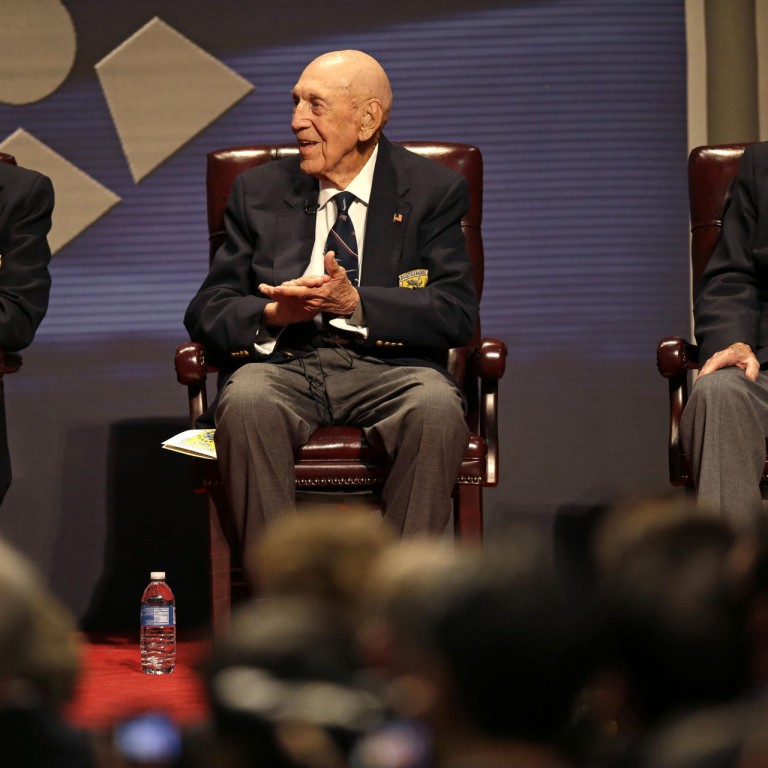
US survivors of Doolittle air raid on Japan meet for one final reunion
Co-pilot on daring US attack on Tokyo tells how he parachuted out of bomber over China
For Jimmy Doolittle's co-pilot, taking off from an aircraft carrier, flying hundreds of miles and bombing Japan was the easy part of the daring 1942 American air raid on Tokyo.
The worst moment came hours later, when he had to parachute out of his B-25 bomber over China in the middle of a heavy storm.
"That was the scariest time," said Richard Cole, now 98. "There you are in an airplane over a land you are not familiar with, under a big weather front, very active with lots of rain, with thunderstorms and lots of lightning and you are going to jump out.
"There are lots of questions that are going through your mind."
Out of the 80 men who took part in the celebrated Doolittle raid that boosted America's morale in the early days of the second world war, only four are still alive. Cole and two of his fellow veterans, also in their nineties, attended a "final reunion" on Saturday at the US Air Force's National Museum in Dayton, in the state of Ohio.
The bold operation was led by Lieutenant Colonel Jimmy Doolittle, who became an American hero after 16 B-25 bombers under his command struck Tokyo five months after the Japanese decimated the US Navy at Pearl Harbour.

When he volunteered for the top-secret mission, Cole knew it would be dangerous but he only learned of the target aboard the carrier USS Hornet in the Pacific.
The assault was close to a suicide mission. The plan called for the aircraft - which had never seen combat - to fly over Japan with no fighter escorts and then head towards eastern China, where homing beacons would supposedly guide them in for a landing.
After their carrier was spotted by a Japanese vessel, Doolittle decided to launch the raid 10 hours earlier than scheduled and 1,200 kilometres from Japan.
The aircraft took off on April 18, and arrived over Japan six hours later, achieving total surprise. After a bombing run that lasted only a few minutes, the B-25s flew towards China. They arrived on the coast at dusk, but a planned homing signal to help them land never appeared. So they flew until their fuel tanks were empty and parachuted out.
Cole's chute got caught in a tree. In darkness and pouring rain, he opted to stay atop the tree until daylight.
"After that, I climbed down and started walking west with my compass," he recalled. "And after walking all day, I came on to a paramilitary compound and was taken in by the Chinese, who were very helpful."
He and his crewmates were eventually reunited and flown out on a US aircraft.
